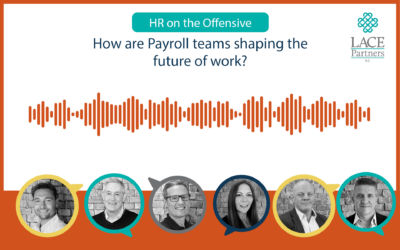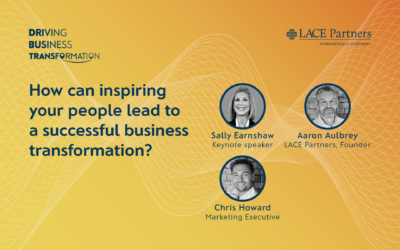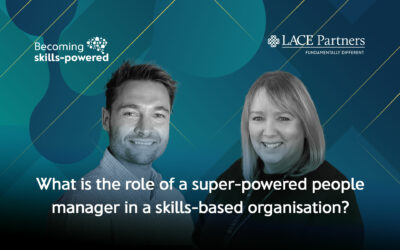An article in the Economist last year focused on the rapid growth of OpenAI, the organisation that runs ChatGPT. The question was posed, ‘What next?’ for the business as its rapid growth has seen it go from a company turning over $28 million to one with revenues projected to be over $1 billion within a year. As the use of generative AI became more mainstream just over a year ago, we’ve been thinking about the HR and people’s challenges the business may be experiencing.
With such a significant increase in customers and revenue, people’s challenges become more complex with the need to hire more workforce and build infrastructure to make the most of such rapid growth. For example, how can such a rapidly growing company maintain their culture, or does the culture need to change? What’s working well with the experience of their employees at work, and what needs to shift? How can they rapidly develop talent management strategies to capitalise on such rapid business growth? In our latest blog, we explore some of the people challenges a business like OpenAI could face as an example of the questions that will be relevant to many high-growth businesses, regardless of the industry they are in.
Rapid growth such as that achieved in OpenAI may seem like a one-off, but it’s not. For example, Groupon grew to $1 billion in two-and-a-half years. But history is littered with examples of organisations that experience rapid growth and don’t capitalise on early adopter advantages. The lack of focus on getting the people strategy right can be a major factor in stunting further growth.
HR processes can quickly become strained if you haven’t got an effective plan in place, including having the right organisational capabilities and culture to enable business growth. For example, a business with 100 people growing to 2,000 people in a year or two may try to achieve this from a standing start without a core HR system, a digital recruitment tool and standardised HR policies and practices.
How can you maintain your culture in a rapid business growth?
How about culture? Can you maintain the same business culture when you grow from 50 or 200 people to 2,000, 5,000 or 10,000 in a relatively short period? Arguably, the answer here is ‘no’. For many organisations, once you reach several hundred people, it becomes more challenging to maintain the culture and values you established when the company was formed. Because a primary reason for this is that ‘everybody doesn’t know everybody’ anymore.
Then, the focus becomes on striving to define the optimal way of achieving cultural alignment, which we previously spoke to the team at Dragonfish about as part of our recent thought leadership campaign called The employee experience revolution.
Ensuring that your people align with your values is of critical importance. In OpenAI’s case, as a not-for-profit, their values are set in a certain way, and there will inevitably be people who don’t align as the workforce grows.
There may be people less attracted in joining a business where their earnings potential could be tapped. But equally, there will be people who see the organisation’s purpose and feel that this is an alignment they want to be part of. Being able to find talent that buys into your purpose can be a powerful tool not just for attraction but also the retention of talent in your business. We’ve previously discussed the recent challenges in businesses trying to tackle the rise in counter-offer culture. If you have a purpose which your people understand and believe in, then reward may be less important as a motivator to attract and retain your top talent.
Consider your approach to talent and skills as well as HR technology
A rapidly growing organisation must also be ready to quickly adapt to the changing skills requirements to maintain its growth. At 200 people, you may have more people with broader skill sets to maximise flexibility, but when you reach 2,000 people, your skills requirements will have changed in terms of skill types, locations and seniority/depth. This is where having a structured and detailed strategic workforce plan is essential, which was part of discussions that we had at our People and workforce analytics community forum in June this year. Asking key questions like “Who are we hiring? Why are we hiring them? What do we need them to deliver and how are we going to deploy them?” are important questions to consider.
Similarly, as a business grows, it is critical to have clear, documented approaches for the key aspects of the employee lifecycle, including end-to-end talent and performance management.
When it comes to digital tools enabling people managers, a growing business needs to call on their HR technology platform. Should you be looking at a single platform that can deliver all your HR and people requirements? Or should you look at more bespoke solutions? What would work best for your business and its requirements? Which other systems do you need it to interface with, e.g. shift working?
What about your approach to payroll? Whether you manage payroll in-house or use a third-party provider, is the current solution scalable? And if you have rapidly expanded internationally, the complexities of your requirements are such that there may be no silver bullet for your payroll solution. As our payroll community has often debated, there appears to be no simple answer to solving complex payroll challenges.
You probably have a lot of questions…
If you are a Chief People Officer (CPO) in a rapidly growing business, we’re sure we’ve only scratched the surface of some of the questions you’ve been asking yourself. But as a final takeaway, here are some questions an organisation (like OpenAI) needs to be asking itself at an early stage in its growth:
- Do we have a plan in place for our cultural evolution?
- What is our future people strategy aligned with our business growth plans?
- Do we have a robust employee value proposition (EVP) to differentiate us in the talent market, and how often are you going to review it as we grow so it is fit for purpose?
- What is our approach to delivering a consistent experience for your people?
- How are we identifying the skills we need now and what we need in the future?
- How will we attract new talent in sufficient numbers?
- Are our payroll processes robust enough as we grow?
- What people systems infrastructure do we need to enable our growth?
If there are questions here that you need to answer, please, reach out to us for a free consultation on how you can tackle them. Fill in the form below and let us know your challenges.






